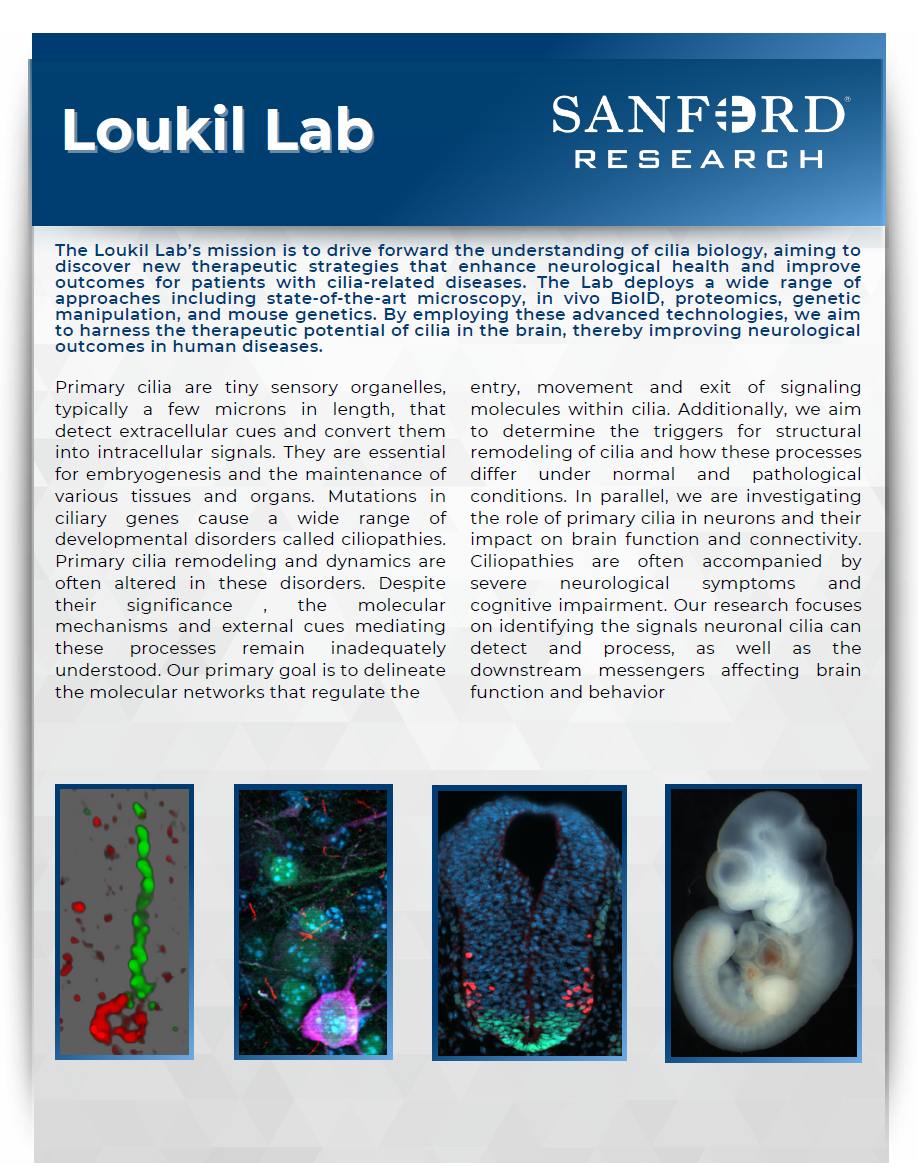The Primary Cilium: A Cellular Antenna Vital for Human Health
The primary cilium is a small, hair-like structure found in most human cells. It acts as a crucial antenna, allowing cells to sense and respond to their external environment. This organelle plays a vital role in maintaining human health. The primary cilium is involved in various physiological processes, from embryonic development to adult tissue maintenance. Its dysfunction has been linked to several human diseases, commonly called ‘‘Ciliopathies’’. These are rare diseases that typically affect multiple organs and tissues, often with a prominent neurological component. The primary cilium coordinates the flow of information between the cell and its surroundings. It can detect and transmit various environmental cues, such as mechanical stimuli, chemical signals, and even light. This sensory function enables cells to adapt and respond appropriately to changes in their microenvironment. Moreover, the primary cilium actively participates in the regulation of cellular processes. By integrating and processing multiple signaling pathways, it plays a crucial role in coordinating cellular activities, including cell division, differentiation, and migration.
As our understanding of the primary cilium continues to evolve, we are uncovering its profound implications for human health. Unraveling the complex mechanisms underlying the primary cilium's functions holds the promise of developing novel therapeutic strategies for a wide range of diseases, ultimately improving the quality of life for affected individuals.
Cilium / Centrosome
The mission of LOUKIL Lab @ Sanford Research is to expand our understanding of how cilia function in normal and pathological conditions, particularly those related to brain health. We are specifically interested in uncovering novel molecular mechanisms that govern cilia biogenesis and remodeling. Additionally, we aim to define the fundamentals of how the underexplored neuronal cilium modulates neuron morphology and connectivity. These processes can be disrupted in neurological disorders. Our ultimate goal is to uncover the true power of the cilium in the brain and fully leverage its therapeutic potential.
Ongoing Projects
Mechanisms of primary cilia dynamics
Primary cilia remodeling and dynamics are often disrupted in a wide range of severe developmental diseases in humans. Despite their significance, we know relatively little about the molecular mechanisms and extrinsic cues that mediate these processes. Previously, we discovered a unique modulator of cilia trafficking and integrity, found in an atypical compartment of the centrosome and mutated in a neurodevelopmental disorder. Using this model, the primary goal is to identify the molecular networks that determine how and why a signaling molecule gets into, moves through, and exits a cilium. We also aim to uncover what triggers the structural remodeling of a cilium and how it varies in normal and pathological conditions.
Neural signaling of primary cilia in the brain
Even though most neurons have a primary cilium, it is still unclear how this organelle mediates brain function and connectivity. Cilia dysfunction causes a variety of developmental syndromes, often accompanied by severe neurological symptoms and cognitive impairment. Their etiology remains poorly understood. The main goal of this project is to uncover the underexplored roles of neuronal cilia in the brain and how they are dysregulated in cilia-related disorders. To begin with, we identified the in vivo protein composition of these organelles and found several neural networks that were previously unknown to be enriched in cilia. Using these exciting findings, the lab is focused on three major questions: (1) What are the signals that the neuronal cilium can detect and process? (2) How do these signals get converted by the cilium? (3) And what are the downstream messengers and their effects on the neuron’s function and connectivity? Our long-term goal is to develop novel strategies for fine-tuning ciliary function to improve neurological manifestations in human disease.
Funding
Loukil lab One-pager








